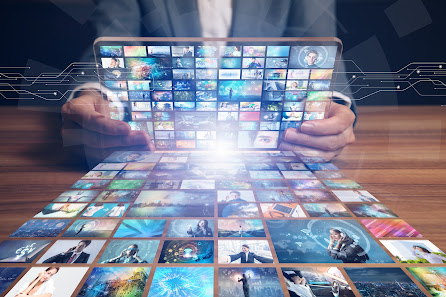Expectation: Personalization
Expectation: Personalization
In a world where our technological environments are constantly changing and growing, cutting through the noise to find value can be challenging. Businesses are trying to find connections with their audiences, and content personalization seems to be one solution to provide audiences with the content they want.
The Adobe Experience Cloud Team (2022) asserts that, “content personalization uses data about consumers to individualize their experiences when they interact with your brand…They can then tailor the content your customers see to match their needs and preferences”. Similarly, Marr (2022) states that, “since the arrival of Netflix and streaming services have upended the way we discover and consume entertainment media, every provider has invested in recommendation technology in order to more efficiently and accurately surface content with audiences that will find it valuable”. By using the various types of data available, businesses can leverage their position in the market, and audiences are getting content that interests them.
3 Types of Data:
Demographic: age, employment, interests, and other familiar information
Contextual: what device is being used, what sites are previously being visited, social media interaction
Behavioral: monitors activity on specific site; what content is being interacted with, what links are performing well, and purchasing patterns.
Ways to Personalize Content:
* Retargeted Ads on Social Media
* Product Recommendations (this can go both ways; audiences can request certain services/products for the company to take into consideration)
* GPS-based Maps
“A Forrester Consulting study showed content personalization initiatives exceed revenue targets and expectations by 68% and conversion rates by 67%. Numbers like these are hard to ignore”
(Adobe Experience Cloud Team, 2022).
The options available across platforms and devices make consuming media easy and with so much time spent doing it, society has grown to expect more customized interactions to match their interests. This has created a competitive culture where businesses that don’t listen to their audiences will fall short.
Although utilizing consumer data can provide beneficial experiences, it does not come without some concern. The Adobe Experience Cloud Team (2022) states, “a global conversation on privacy and security has evolved around unsecured data and the frequency of security breaches. We have lived with technology long enough to appreciate its benefits but also understand its drawbacks”. Consumers and audiences alike have also come to expect a level of transparency with the businesses they interact with and how their information is used. Despite this, people are consuming media like never before.
Lastly, Marr (2022) asserts that, "traditional, mainstream, and mass-market forms of media and entertainment will continue to lose ground to the more personalized, niche, and community-driven media known as the creator economy". This demonstrates that no matter what market you're in, consumers have come to expect personalized content when they interact with your brand.
References
Adobe Experience Cloud Team. (2022, December 16). Personalized content- the basics and the benefits. Adobe. https://business.adobe.com/blog/basics/learn-about-content-personalization
Marr, B. (2022, March 2). The 5 biggest media and entertainment technology trends in 2022. Forbes. https://www.forbes.com/sites/bernardmarr/2022/03/02/the-5-biggest-media-and-entertainment-technology-trends-in-2022/?sh=5943faff3277

.jpeg)
Comments
Post a Comment